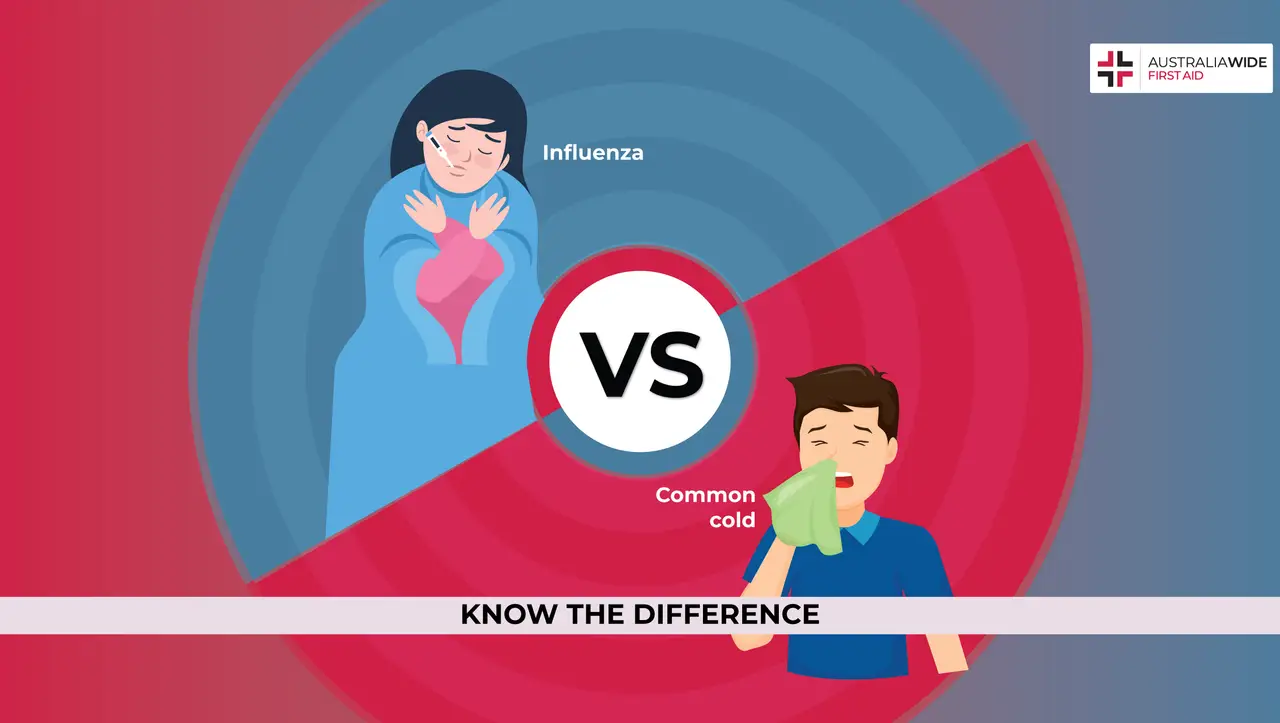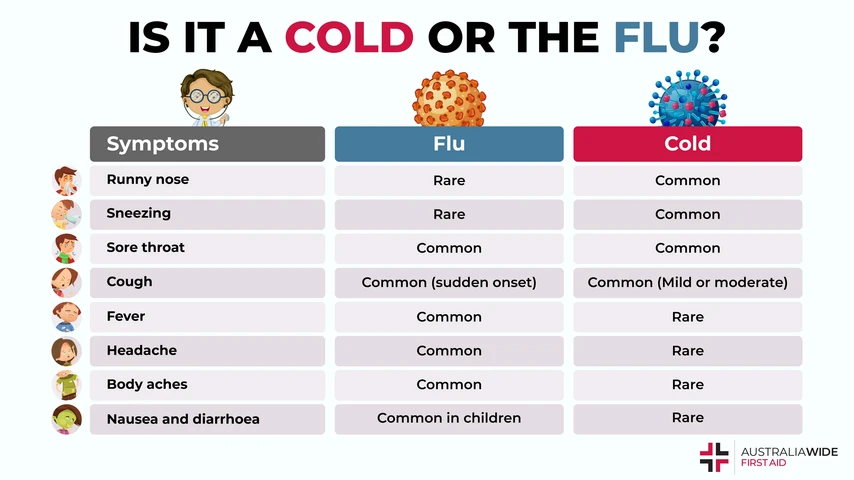Is it a Cold or Flu?


Though you can catch the flu at any time, it is generally agreed that flu season descends upon Australia during the colder months of the year, from April to October.
The severity of flu season can vary from one year to the next. So far, this year’s flu season is proving to be a formidable one, to the extent that free flu vaccination campaigns are being rolled out across the country.
Though the flu is on a veritable rampage, it is important to remember that many other viral infections are skulking around the community. The flu shares many symptoms with the common cold, another respiratory illness that can cause its own host of health complications. We are going to look at 5 key differences between the flu and the common cold. That way, you will know which treatments to adopt for a swift recovery.
Both influenza (flu) and the common cold are contagious respiratory illnesses. However, they are caused by different viruses.
The flu is only caused by influenza viruses, of which there are 4 types: A, B, C, and D. According to the Centres for Disease Control and Prevention (CDC), influenza A and B viruses are the main drivers of flu season. Influenza C viruses, meanwhile, are generally mild, and they are not thought to cause human epidemics. Likewise, influenza D viruses primarily affect cattle.
The common cold can be caused by a variety of different viruses, such as rhinoviruses, parainfluenza, and seasonal coronaviruses. Seasonal coronaviruses are not the same as SARS-COV-2, the virus that causes COVID-19. According to Dr Clayton Cowl, a physician who specialises in the respiratory system, the virus that causes COVID-19 is novel because it started with an animal population and can spread between humans at a faster rate.
Both influenza viruses and the common cold are spread when an infected person coughs, sneezes, or talks, and releases moisture droplets into the air. You can become infected by:
According to NSW Health, people with influenza are infectious from the day before their symptoms start. Adults are most infectious in the first 3 – 5 days of their illness, while children and people with weakened immune systems may remain infectious for longer. People with the common cold, however, can be infectious up to 3 days before their symptoms start, and for as long as their symptoms are present. The common cold typically lasts from 7 – 10 days.

According to the CDC, the flu is generally worse than the common cold, as symptoms begin more abruptly and are more intense. Per Australia’s Department of Health, symptoms of the flu include:
People with the common cold are more likely to experience milder symptoms like a runny nose or sneezing, as well as a cough or sore throat. They are less likely to experience headache, body aches, or vomiting and diarrhoea.
The flu is more likely than the common cold to cause serious complications. Though most people recover from the flu within a week, serious complications can occur in certain high-risk groups, including:
The most common complications arising from the flu include sinus and ear infections, viral or bacterial pneumonia, and, in more severe cases, inflammation of the heart, brain, or muscle tissues.
The common cold can also pave the way for acute sinus and ear infections, as well as acute bronchitis, but it is unlikely to cause hospitalisations in the same way the flu can.
There is no known cure for the flu nor the common cold, though you can reduce your risk of becoming infected by maintaining good hygiene practices. You can also protect yourself against the flu by getting vaccinated.
Likewise, though the common cold and mild cases of the flu tend to resolve themselves without any treatment, you can relieve symptoms by:
You can also use over-the-counter medications like decongestants and antihistamines to ease symptoms. However, you should speak to your doctor or pharmacist beforehand to ensure that the medication is suitable to take. You should never take antibiotics to treat the flu or the common cold, as antibiotics are designed to treat bacterial infections, not viral ones.
As you navigate this year’s flu season, it is important to remember that the flu shares many symptoms with the common cold.
Knowing the key differences between these two viral infections can help you adopt more effective treatments and make a faster recovery.
There is no known cure for the flu nor the common cold, but symptoms can be eased using supportive measures. Take a first aid course to learn how to effectively prevent, identify, and manage symptoms of the flu and the common cold.

October 28, 2022
Shingles is a viral infection that can occur in anyone who has had chickenpox. It's most distinct symptom is a painful, blistering rash that occurs on one side of the body. Without prompt treatment, shingles can have life-threatening complications.

August 4, 2022
The Australian Bat Lyssavirus (ABLV) forms part of the same family as the rabies virus. ABLV infects all four species of fruit bats and flying foxes in Australia. In humans, ABLV can cause respiratory difficulties, coma and, in most cases, death.

June 10, 2022
Flu viruses can change their surface structure from one year to the next. As such, new flu vaccines are developed each year. Flu vaccines comprise numerous ingredients that aid their development, purity, and efficacy.